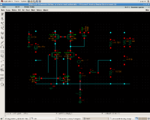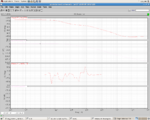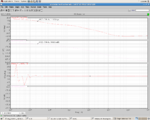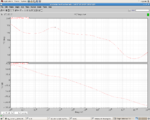kishore680
Member level 5
Hello all i want to find out gain and phase margin of an LDO.So in order to that i have done ac analysis by breaking the loop and placing inductor and Coupling ac to the + terminal as shown here
 . Is this the right way is my first question
. Is this the right way is my first question
second question.Where the phase angle should start -180 or 180. Cause i plotted from 1 hz to 1Ghz and 100 hz to 1G hz in cadence. I got two different results as shown below.


why is that so? . Which is correct and why? ac magnitude=1mv
 . Is this the right way is my first question
. Is this the right way is my first questionsecond question.Where the phase angle should start -180 or 180. Cause i plotted from 1 hz to 1Ghz and 100 hz to 1G hz in cadence. I got two different results as shown below.


why is that so? . Which is correct and why? ac magnitude=1mv
Last edited:
